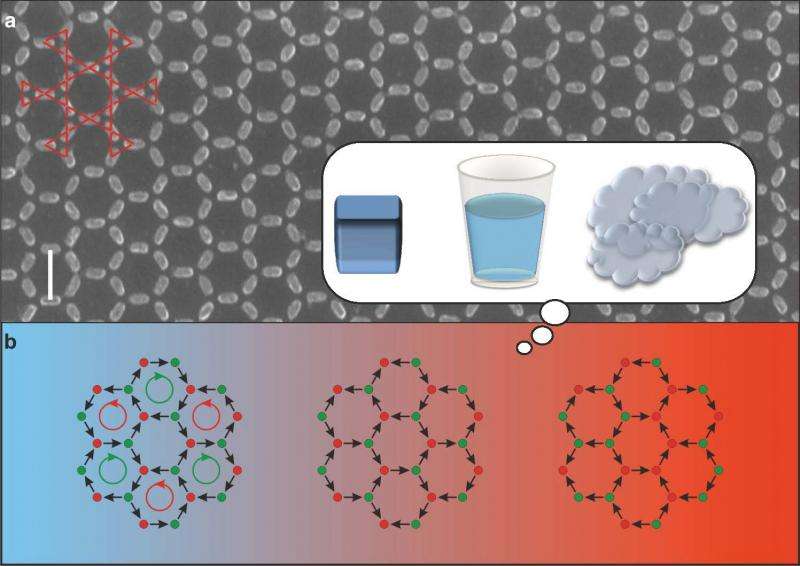September 28, 2015 report
Best of Last Week-How to put living organism into supposition state, linking human brains and brain part tied to anxiety

(Phys.org)—It has been a very interesting week for physics, particularly for those researchers working in applied areas, one team at the Paul Scherrer Institute created a synthetic material out of a billion tiny magnets that mimic steam, water and ice. And a pair of researchers, one in the U.S. and the other in Iran, found that a spinning ring on a table behaves more like a boomerang than a coin—they believe it is due to the hole allowing air to pass through.
Also, another pair of researchers, one in China and the other in the U.S., offered a way to put a living organism into a superposition state—by sticking a bacterium to an oscillating membrane used in a prior experiment. And a team at NIST broke the distance record for quantum teleportation—they "teleported" light particles over 100 kilometers, quadruple the previous record. And a team a Lawrence Livermore National Laboratory described a new theory of stealth dark matter that may explain the universe's missing mass—they combined theoretical and computational techniques to come up with a model that describes the "stealthy" nature of the mysterious stuff. Also, a team working with ALICE at the LHC announced that they had confirmed fundamental symmetry in nature via measurements of particle mass and electric charges.
In other news, a team working at Harvard University announced that they had come up with a rechargeable battery to power a home from rooftop solar panels—they claim it is cost-effective, clean and safe, since it is not flammable. And in a rather eerie study, a group working at the University of Washington reported on a study in which they linked two human brains for a question-and-answer experiment. Volunteers had their brains connected and were then able to ask questions and "hear" what the other person gave as an answer. A team with the U.S. Geological Survey published a report describing how El Niño and La Niña will exacerbate coastal hazards across the entire Pacific—as global warming continues.
And finally, if you are feeling anxious, researchers at the University of Illinois suggested you check your orbitofrontal cortex and cultivate your optimism—grownups with larger OFC, they found, tend to be less anxious and more optimistic.
© 2015 Phys.org





















